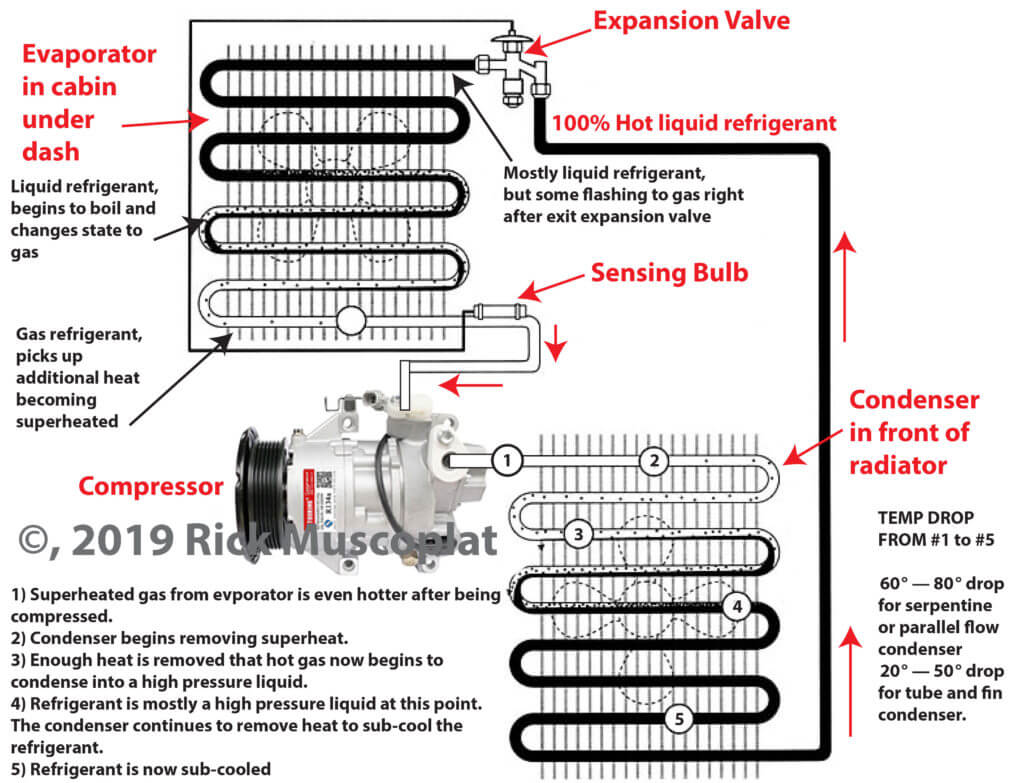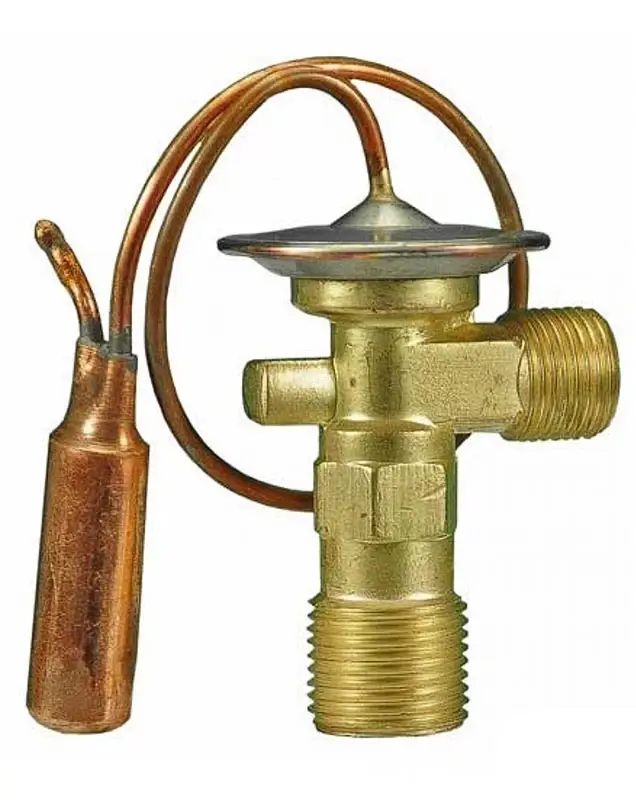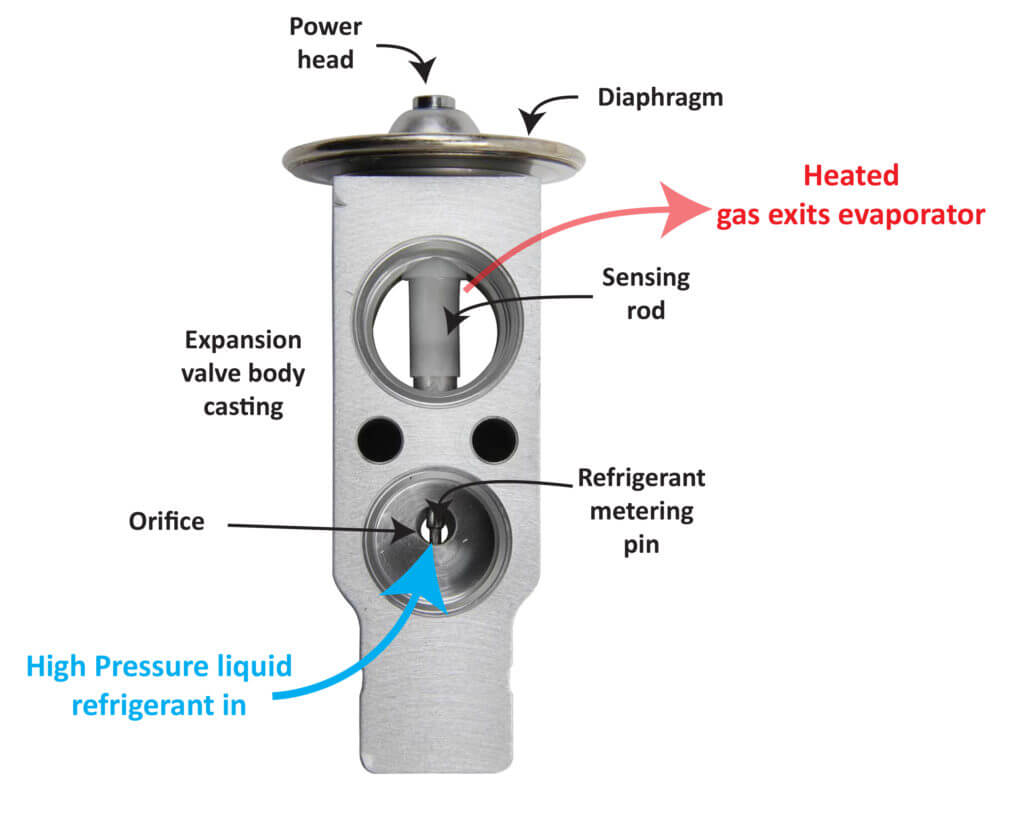How your car’s AC expansion valve works
Learn how your car’s AC expansion valve works and how it fails
Your car’s AC expansion valve, also called a thermostatic expansion valve (TXV), is an important component in the air conditioning system of an automobile. Its primary function is to regulate the flow of liquid high-pressure refrigerant into the evaporator coil, where the refrigerant absorbs heat from the cabin, cooling the air in the process.
Different types of auto AC
Auto AC can use either an expansion valve or an orifice tube design. This post explains how an expansion valve auto AC system works. Most car makers have moved away from orifice tube designs to the thermostatic expansion valve design because it’s far more efficient.
What is an expansion valve?
An expansion valve meters the flow of liquid refrigerant into the evaporator, where it changes from a liquid to a gas by absorbing heat from the cabin air. The expansion valve can have a remote sensing bulb or an integral sensing device (called an H block). The diagram below shows an expansion valve with a remote-sensing bulb. The remote sensing bulb is connected to the expansion valve by copper tubing filled with an expanding gas, which is referred to as a capillary tube.
As the sensing bulb detects more heat, the gas in the bulb and capillary tube expands, causing the diaphragm in the expansion valve to open and allow more liquid refrigerant into the evaporator. The additional refrigerant lowers the temperature at the sensing bulb, causing the gas to contract and shut off or slow the flow of refrigerant inside the expansion valve.
What happens inside the evaporator?
High-pressure liquid refrigerant sprays into the evaporator. Hot cabin air flows across the evaporator. The liquid refrigerant absorbs this cabin heat, causing it to boil and change state from a liquid to a gas, much like water boiling on a stove and turning into steam. The heat required to make the refrigerant change from a liquid to a gas is coming from the cabin air that passes across the evaporator.
Once the refrigerant changes state to a gas, it continues to pick up more heat from the cabin air. This additional heat is referred to as superheat. A certain amount of superheat is common in all expansion valve systems, which is different from an orifice tube-style system. The superheated gas then leaves the evaporator and flows into the compressor.
What the compressor does
The superheated gaseous refrigerant enters the compressor, where it’s compressed into a high-pressure gas and pushed into the condenser.
The job of the condenser
The condenser has three jobs:
1) De-superheat the refrigerant. Remove the extra heat created during both the superheat phase in the evaporator and the extra heat created during the compression cycle.
2) Remove more heat from the gaseous refrigerant to the point where it condenses back into a liquid.
3) Sub-cool the refrigerant. This sub-cooling is an important process because it reduces the temperature of the high-pressure liquid refrigerant closer to its evaporating temperature so it can more easily change the state inside the evaporator. Sub-cooling increases the system’s net refrigeration effect.

The temperature drop across the condenser is what causes the hot gas to condense back into a liquid
Carmakers use serpentine/parallel flow and tube and fin-style condensers. The temperature drop between the inlet and outlet of the condenser measures its efficiency.
In an expansion valve system, you should see a 60°F — 80°F drop for a serpentine or parallel flow condenser and a 20°F — 50°F drop for a tube and fin condenser. If your readings don’t show that, check for clogged fins, incorrect fan speed, or internal blockage.
What causes an expansion valve to fail?
There are several reasons why a car’s A/C expansion valve (also known as a thermostatic expansion valve or TXV) can fail:
Contaminants in the refrigerant system
Debris, moisture, or other contaminants in the refrigerant can clog or damage the valve’s internal components, preventing it from operating properly.
Mechanical failure
Over time, the internal mechanisms of the valve, such as the diaphragm, spring, or sensing bulb, can wear out or break, leading to a failure.
Improper installation or maintenance
Incorrectly installing or maintaining the expansion valve can lead to premature failure or improper operation.
If the expansion valve fails, it can cause various issues in the A/C system, such as poor cooling performance, excessive pressure buildup, or compressor damage. Replacing the faulty expansion valve is typically necessary to restore proper operation of the air conditioning system.
©, 2020 Rick Muscoplat
Posted on by Rick Muscoplat

